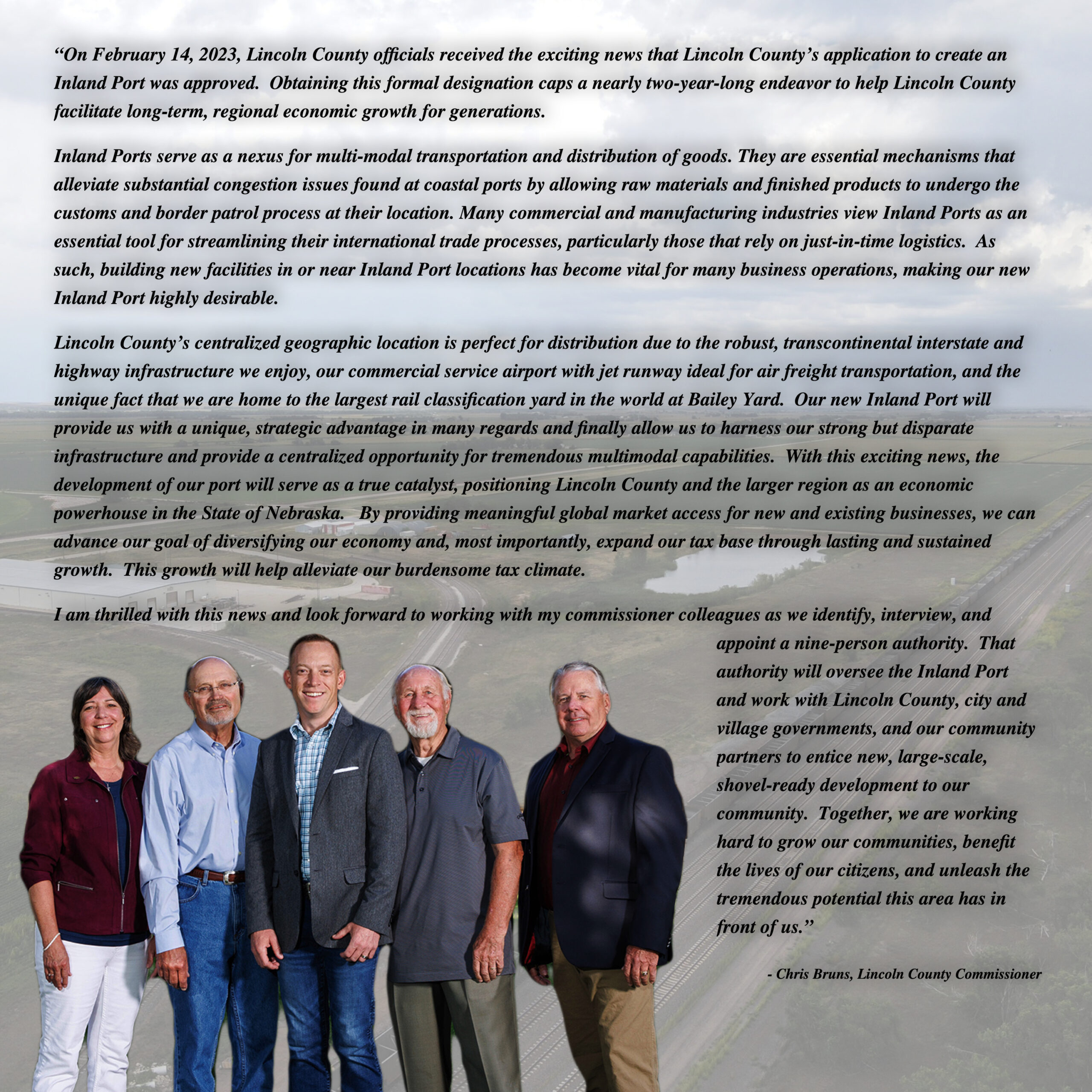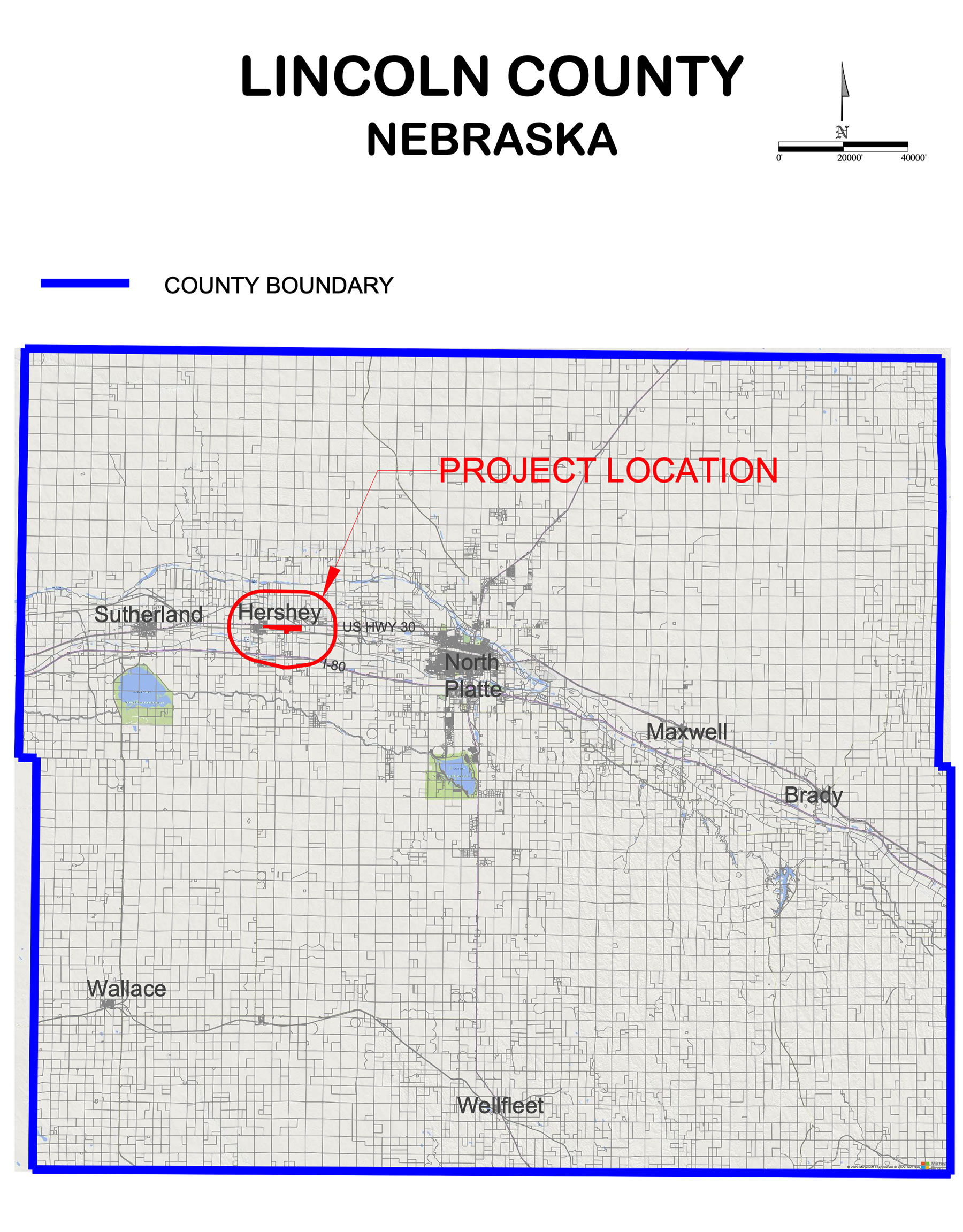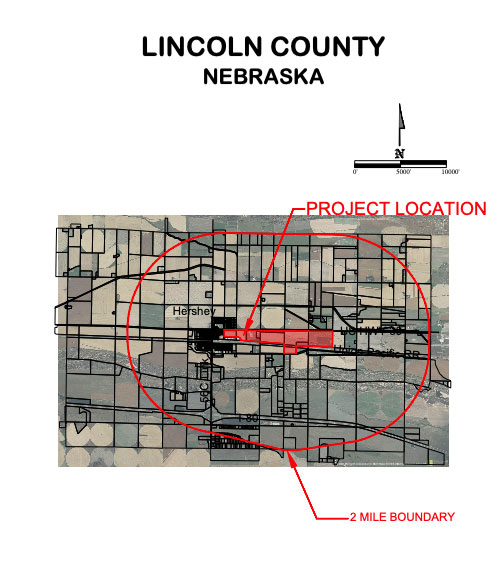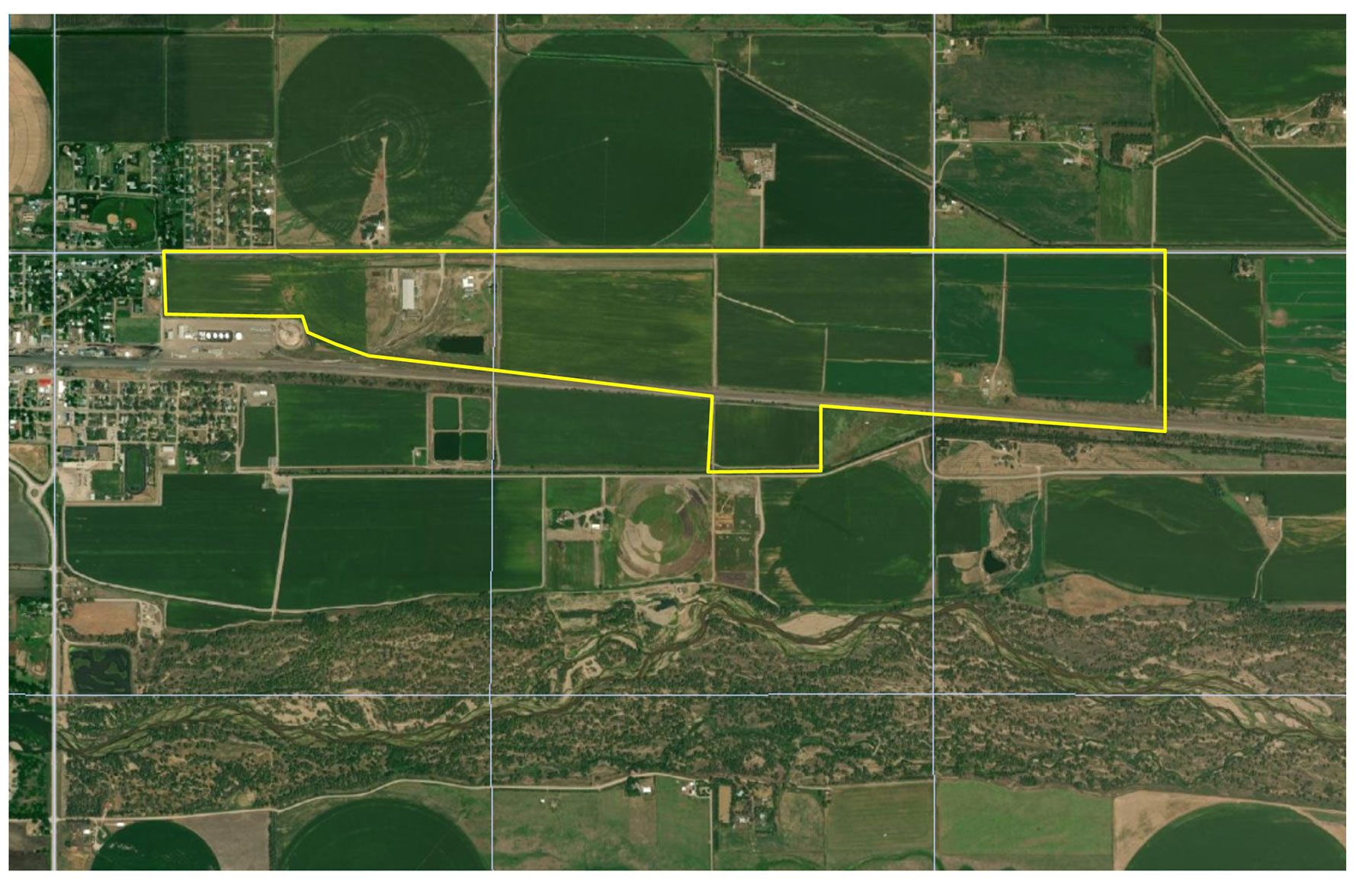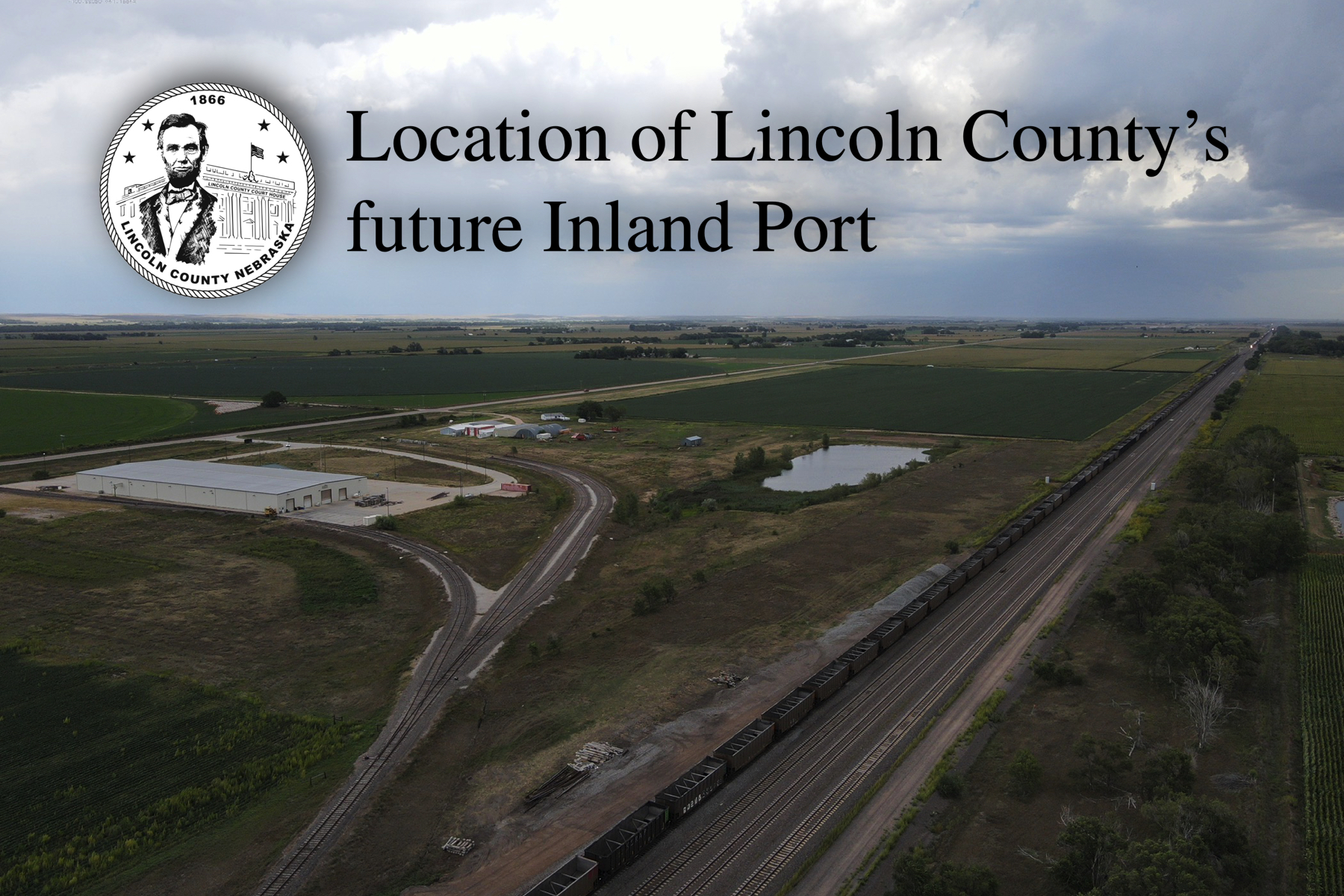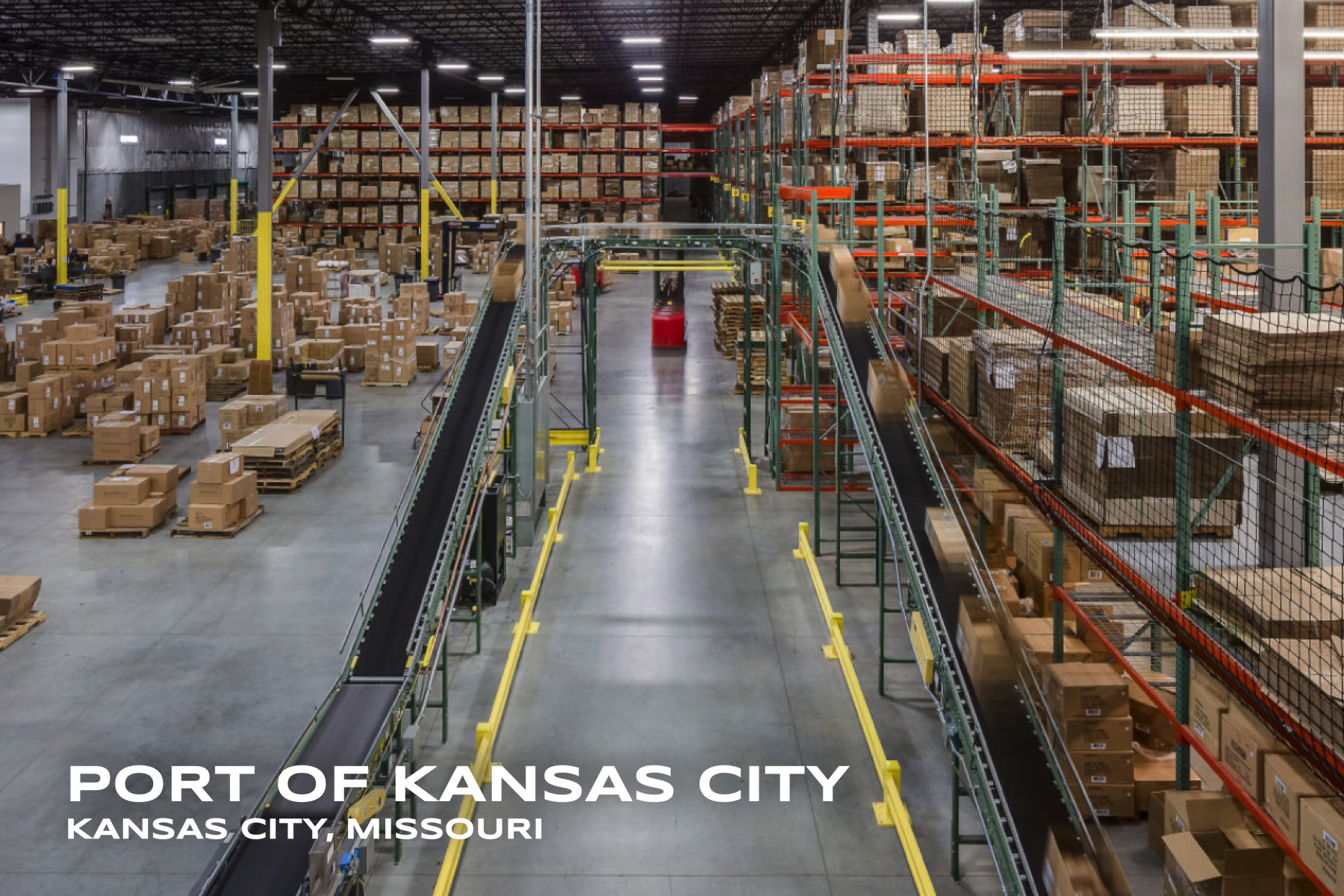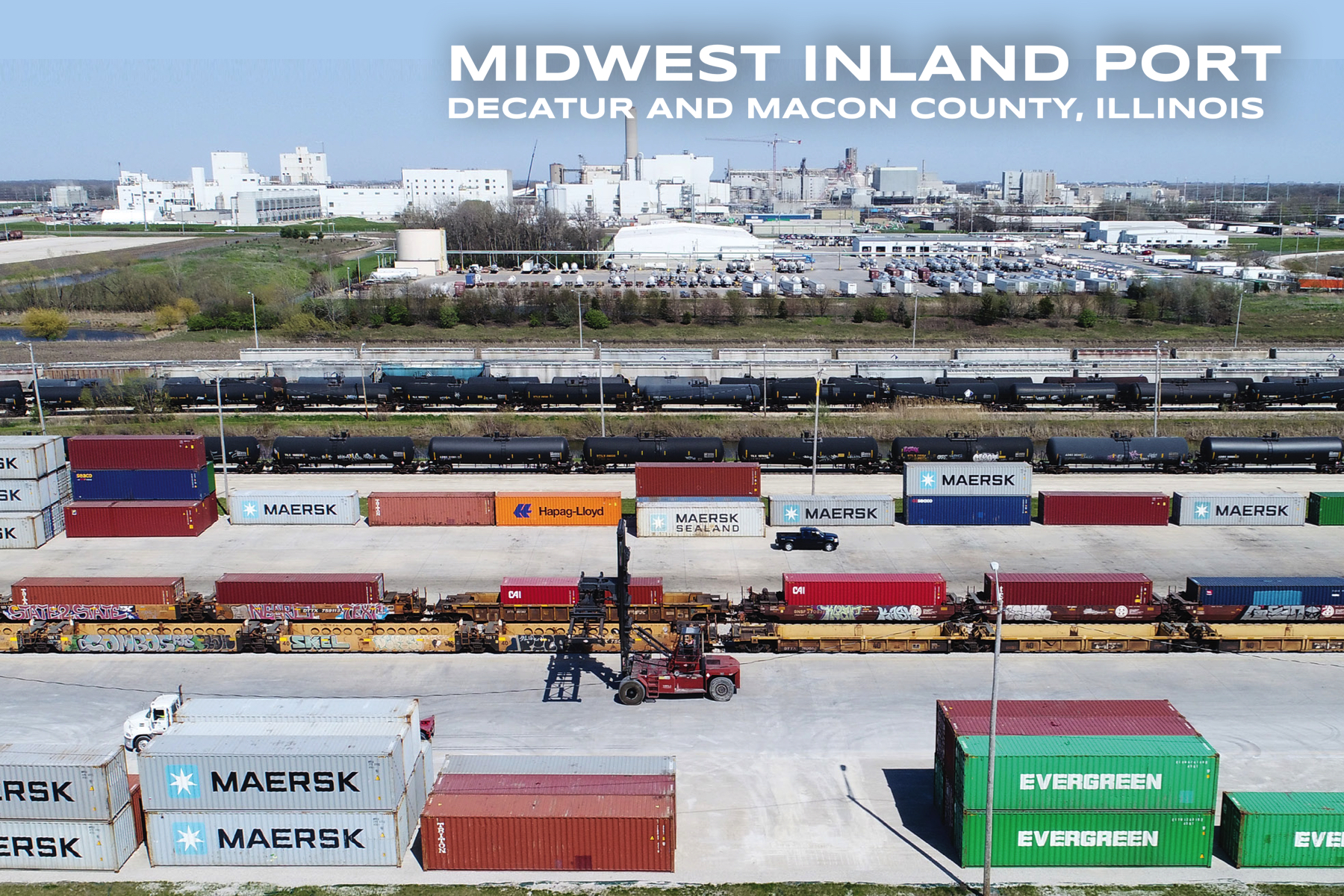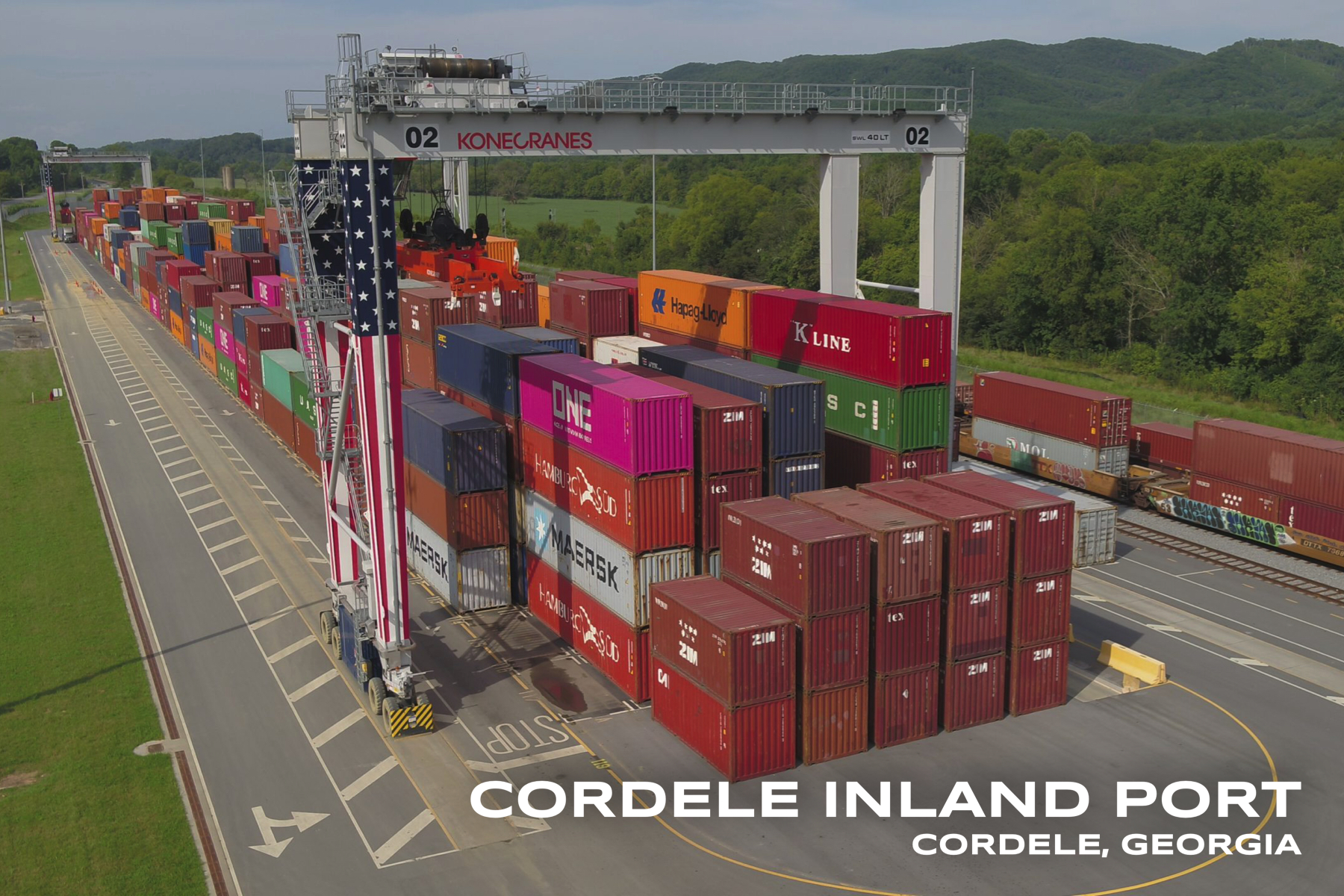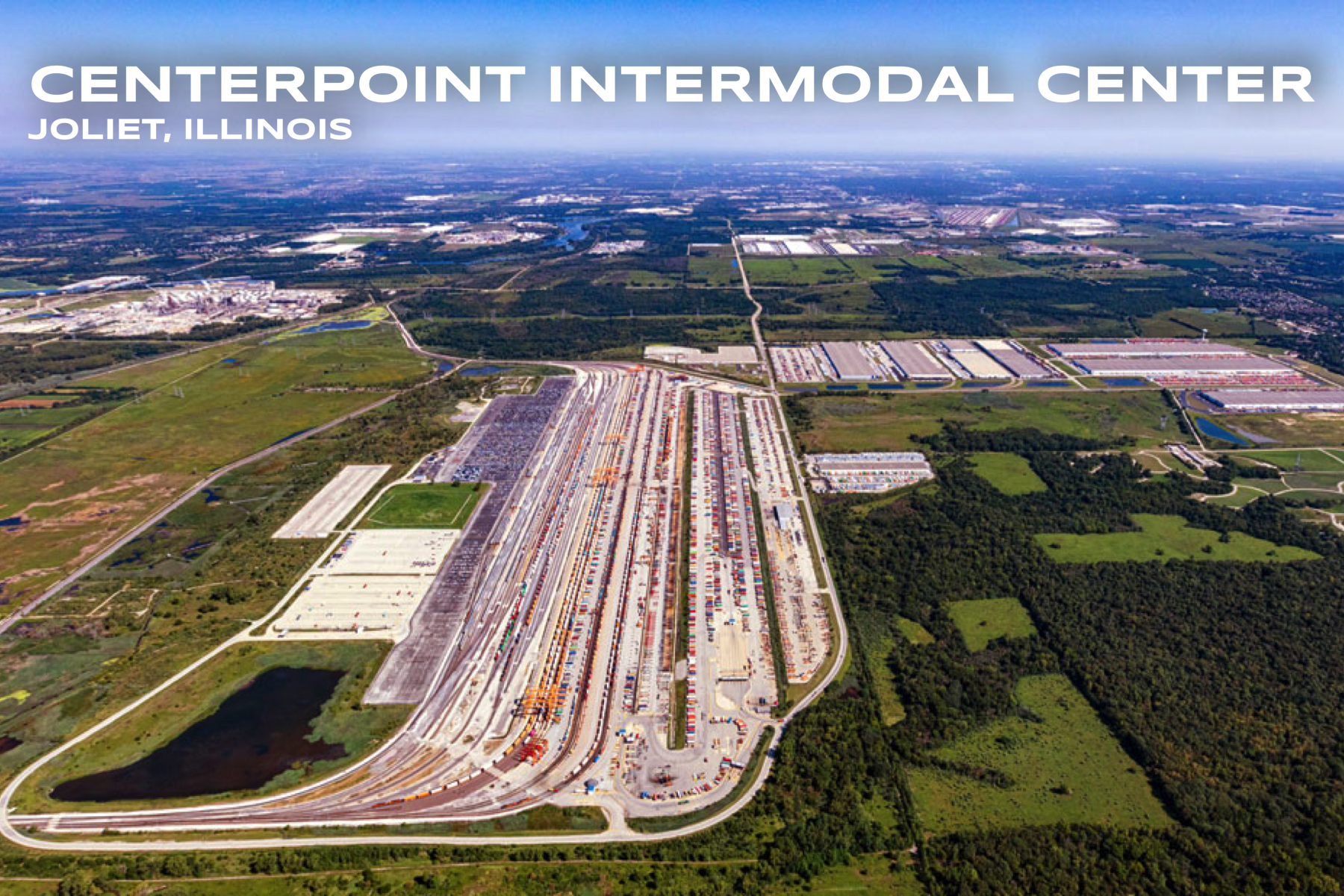Lincoln County Receives Inland Port Authority Designation
A port of entry (POE) is an official location where a person or goods may lawfully enter the country. Typically, the site has United States Customs and Border Protection (CBP) staff and facilities to conduct appropriate inspections to ensure contraband is not imported. A POE usually consists of international airports, logistical seaports where international trade cargo enters or departs, and locations where road and rail crossings traverse national land borders.
Nearly 26 million shipping containers arrive in the United States each year full of goods from international trade. More than 11 million maritime containers arrive at our seaports. At land borders, another 11 million arrive by truck and 2.7 million by rail. Logistically, many of those containers are moved through controlled processes to inland ports for their port of entry inspection, de-containering, and departure to the final destination. The CBP is responsible for knowing what is inside each container, whether it poses a risk to the American people, and ensuring that all proper revenues are collected. CBP works with the trade community, and programs like the Container Security Initiative and the Customs Trade Partnership Against Terrorism help to increase security and safeguard the world’s trade industry. CBP uses risk-based analysis and intelligence to pre-screen, assess and examine 100 percent of suspicious containers. The remaining cargo is cleared for entry into the U.S. using advanced inspection technology. Conversely, exports leave out of these same ports taking goods and products from communities across the country to international recipients.
A Port of Entry (POE) for international trade operations is typically found at coastal seaports or major U.S. border crossing locations. These ports are commonly high-density locations that have become increasingly congested over the years, leading to severe backlogs of goods processing and contributing to the unprecedented breakdown of supply chains affecting numerous industries.
A solution for many of the problematic issues found at coastal and border POE locations is the construction and utilization of inland ports, also known as dry ports, in areas that are conducive to alleviating congestion due to their access to solid transportation infrastructure, open and available real estate perfect for large-scale, mega site development, and the ability to compliment the growing trends in just-in-time logistics.
Inland ports allow containers coming in on shipping lines to bypass detailed inspections at congested coastal ports by being transloaded from the ship directly onto rail transportation without breaking the chain of custody and then transported to the inland port location. Once at the inland port location, CBP gets to work conducting detailed inspections, de-containering the loads, and clearing customs. The advent of inland ports as an integral part of international trade allows manufacturing and other industry to locate in places that may be more conducive for investment, construction of facilities, and the growth of economies throughout the region of the inland port location. The efficiencies allowed by inland ports save money and other resources for all stakeholders involved in international trade. Most importantly, the time savings in trade operations is critical, enabling end customers to receive their goods and raw materials expeditiously.
Currently, there are several inland ports throughout the continental United States. Those inland ports have had profoundly positive impacts on the communities servicing them, significantly contributing to their local economies through job creation, expanding global market access for existing businesses with greatly reduced costs, and significantly impacting the growth of gross regional domestic product (DRDP). The benefits to the communities surrounding inland ports also include expanded tax bases, more resilient infrastructure, and healthier, more vibrant towns and cities.
For the first time in our state’s history, Nebraska has authorized up to 5 Inland Port Districts and respective Inland Port Authorities that oversee operations in those districts through Neb. Rev. Stat. §13-3301, known as the Municipal Inland Port Authority Act. Those ports, under the act, are intended to stimulate the Nebraska economy by incentivizing the development of new industrial hubs and providing the economic development tools necessary to acquire and develop large commercial and industrial shovel-ready sites. Nebraska’s Inland Port Districts are intended to serve as regional merging points for multi-modal transportation and the distribution of goods. Under the Act, an inland port authority may plan, facilitate, and develop its inland port district in conjunction with a city, county, and other public and private entities.
May 2019 A group of community leaders met with the Union Pacific Railroad to discuss the need for gaining access to the railroad infrastructure for purposes of economic development.
January-May 2021 State Legislature debates and passes LB40—The Nebraska Rural Projects Act, which provides financial assistance for the development of industrial rail parks, and LB156—The Municipal Inland Port Authority Act, which authorizes up to 5 inland ports in the state of Nebraska. Both bills were strongly supported by the Lincoln County Board of Commissioners with formal resolutions of support and in-person testimony.
May 2021 Governor Ricketts signs the Nebraska Rural Projects Act and the Municipal Inland Port Authority Act into law. Lincoln County Commissioners begin discussions on a potential Inland Port in Lincoln County.
January 2022 North Platte Area Chamber and Development Corporation applies for $30 million of match funding through the Nebraska Rural Projects Act to assist in developing the Industrial Rail Park.
June 2022 Nebraska Department of Economic Development approves the North Platte Area Chamber and Development Corporation application for Nebraska Rural Projects Act match funding.
August 2022 Lincoln County Board of Commissioners provide funding for the purchase of the former Greenbrier Rail Services property and mainline switch that is critical to the overall Industrial Rail Park and future Inland Port using SLFRF funds for the purpose of a potential Inland Port Authority operations facility.
October 2022 Lincoln County approves Resolution Number 2022-28 that creates an Inland Port in Lincoln County and submits that resolution as an application to the Nebraska Department of Economic Development for consideration of formal inland port designation under the Municipal Inland Port Authority Act.
February 2023 The Nebraska Department of Economic Development certifies the designation of Lincoln County’s Inland Port District and Inland Port Authority
Spring 2023 Lincoln County Board of Commissioners will formally name the Inland Port and appoint the 9-member Inland Port Authority to govern the Inland Port District in partnership with local and county governments.
Summer 2023 The new Inland Port Authority will organize and establish by-laws for inland port operations moving forward.
June 5, 2023 The Lincoln County Board of Commissioners name the port at a regular meeting. “Nebraska International Port of the Plains”
The Lincoln County Board of Commissioners appoint 9 member to serve on the port authority board.
Vince Dugan-3 years; Kirk Olson-3 years; Dwight Porter-3 years; Jim Hawks-2 years; J. Patrick Keenan-2 years; Kimberly Steger-2 years;
LeeAnn Ellis-1 year; Michael Steele-1 year; Kevin Tighe-1 year
The Lincoln County Board of Commissioners envisions an Inland Port in Lincoln County that will benefit all of Greater Nebraska and the multi-state region. Lincoln County’s strategic location, robust transportation infrastructure with cross-country highway systems, Bailey Yard, and North Platte Regional Airport/Lee Bird Field, and our ability to facilitate large-scale development places our inland port in a prime position to make Lincoln County an economic powerhouse in Nebraska and the larger geographical region. This vision includes exceptional trans-loading capabilities to serve all regional businesses, direct access to rail infrastructure for new manufacturing and industry, and enough real estate within the port to design and build facilities and infrastructure necessary for seamless CBP and port authority operations. The Lincoln County Board of Commissioners foresees greater diversification of our local economy, particularly in manufacturing, value-added agricultural processing, and goods and product warehousing and distribution.
An inland port in Lincoln County will also provide the operational infrastructure to complement the physical infrastructure in the larger industrial rail park development. As we continue to infill the currently set inland port district and industrial rail park, the Board of Commissioners will look to expand the boundaries of the inland port in a manner consistent with demand, our Lincoln County Comprehensive Plan, and appropriately facilitate the growth of Lincoln County in a responsible way. The long-term vision for the inland port is an economic zone encompassing thousands of square acres between Hershey and North Platte, Nebraska.
As part of the Lincoln County Board of Commissioners’ long-term vision for the overall development, Lincoln County and the eventual inland port authority will seek to obtain a Foreign- (or “Free”) Trade Zone (FTZ) to further augment our economic growth and exponentially increase the marketability of Lincoln County with national and international business entities as FTZ’s can save large tenants hundreds of thousands of dollars annually. More information about the details and benefits of an FTZ can be found by clicking on the following links:
The economic impact on Lincoln County by establishing an inland port in conjunction with our industrial rail park is staggeringly positive. According to Cempel International Transportation Consulting, the firm hired to conduct an economic impact analysis, projections based on the development of the current industrial rail park and inland port district size and scope include:
- Construction Impacts:
- An average annual employment impact of 156 direct/indirect construction jobs created
- Construction labor income of $92.9 million
- Total economic output from construction employment, including value-added impact, of $238.2 million
- Total tax revenue from construction for local, county, state, and federal governments of $25,133,400
- Operational Impacts:
- Annual economic output for Lincoln County of over $2.4 billion
- Over 5,200 new jobs created
- Annual labor income of $346 million
- Increase of gross regional product of $534.9 million annually
- Present-value yearly tax revenue from operations of the fully built-out industrial park and inland port for local, county, state, and federal governments of $118.1 million
- Annual local general/special present-value tax revenue of $19.4 million
- Annual county present-value tax revenue of $3.7 million
- Annual state present-value tax revenue of $18.9 million
As the inland port district and industrial rail park expand past the initial 393 acres, the beneficial economic impacts to the region will grow as well. Additional economic implications for the area include the markedly expanded access to global markets for agricultural producers and existing business and industry. All told, an inland port in conjunction with the industrial rail park in Lincoln County will provide an unprecedented opportunity for economic and community growth for generations to come.
This authority will oversee and govern the inland port district in partnership with local and county governments with significant responsibilities regarding ensuring infrastructure needs are met and operations are efficient and effective while helping facilitate the needs of U.S. Customs and Border Protection (CBP) operations. In partnership with the North Platte Area Chamber and Development Corporation, the nine-member authority will also play a significant role in the development of the district and industrial rail park. This partnership will include working hand-in-hand to attract and facilitate private businesses and industry to invest and build in our larger community, particularly the port district.
Lincoln County Board of Commissioners Resolution 2022-28 requires the inland port authority to convene at least once monthly, follow all criteria and requirements of the Nebraska Open Meetings Act, and that the inland port authority shall be subject to public records requests according to Neb. Rev. Stat. §81-712 et seq.
Additional powers and responsibilities include:
(1) An inland port authority shall have the power to:
(a) Plan, facilitate, and develop the inland port district in conjunction with the city, the county or counties, and other public and private entities, including the development of publicly owned infrastructure and improvements within the inland port district;
(b) Engage in marketing and business recruitment activities and efforts to encourage and facilitate development of the inland port district;
(c) Apply for and take all other necessary actions for the establishment of a foreign trade zone, as provided under federal law, within the inland port district;
(d) Issue and sell revenue bonds as provided in Neb. Rev. Stat. §13-3308;
(e) Acquire, own, lease, sell, or otherwise dispose of interest in and to any real property and improvements located thereon, and in any personal property, and construct buildings and other structures necessary to fulfill the purposes of the inland port authority;
(f) Acquire rights-of-way and property of any kind or nature within the inland port district necessary for its purposes by purchase or negotiation;
(g) Enter into lease agreements for real or personal property, either as lessee or lessor;
(h) Sue and be sued in its own name;
(i) Enter into contracts and other instruments necessary, incidental, or convenient to the performance of its duties and the exercise of its powers, including, but not limited to, agreements under the Interlocal Cooperation Act with the city, the county or counties, or any other political subdivision of this or any other state;
(j) Borrow money from private lenders, from the state, or from the federal government as may be necessary for the operation and work of the inland port authority;
(k) Accept appropriations, including funds transferred by the Legislature pursuant to Neb. Rev. Stat.§81-12,146, contributions, gifts, grants, or loans from the United States, the State of Nebraska, political subdivisions, or other public and private agencies, individuals, partnerships, or corporations;
(l) Employ such managerial, engineering, legal, technical, clerical, accounting, advertising, administrative, or other assistance as may be deemed advisable, or to contract with independent contractors for any such assistance;
(m) Adopt, alter, or repeal its own bylaws, rules, and regulations governing the manner in which its business may be transacted, except that such bylaws, rules, and regulations shall not exceed the powers granted to the inland port authority by the Municipal Inland Port Authority Act;
(n) Enter into agreements with private operators or public entities for the joint development, redevelopment, reclamation, and other uses of property within the inland port district;
(o) Own and operate an intermodal facility and other publicly owned infrastructure and improvements within the boundaries of the inland port district; and
(p) Establish and charge fees to businesses and customers utilizing the services offered by the inland port authority within the inland port district as required for the proper maintenance, development, operation, and administration of the inland port authority.
(2) An inland port authority shall neither possess nor exercise the power of eminent domain.
Inland port authority board members that are appointed by the Chairman of the Lincoln County Board of Commissioners, with the approval of the County Board, will serve staggered terms of four years in such a manner as to ensure that the terms of no more than three members expire in any one year.
Inland port authority members shall have attained the age of majority under Nebraska law at the time of appointment.
Inland port authority members shall reside in Lincoln County at the time of appointment and during their term.
Appointments to the inland port authority are at large.
Importantly, no individual may serve on the inland port authority board or as an employee of the inland port authority, if that individual or any of their family members owns an interest in any real property located within the boundaries of the inland port district or if the individual or their family members owns an interest in is directly affiliated with or employed by any entity that the individual reasonably believes is likely to participate in or receive a direct financial benefit from the development of the inland port district, or acquires an interest in any facility located within the inland port district.
No sitting inland port authority board member, board member’s immediate family, as defined by Neb. Rev. Stat § 49-1425, or businesses with which a board member is associated, as defined by Neb. Rev. Stat § 49-1408, may submit bids or be financially interested in any contract paid for by money appropriated by the inland port authority board. Furthermore, inland port authority board members, their immediate family, as defined by Neb. Rev. Stat § 49-1425, or business with which an inland port authority board member is associated, as defined by Neb. Rev. Stat § 49-1408, shall not become a named contractor, subcontractor, consultant or vendor under any contract paid for by money appropriated by the inland port authority board. The existence of such an interest or participation in any contract as a contractor, subcontractor, consultant or vendor shall render the contract voidable by decree of a court of competent jurisdiction as to any board member, board member’s immediate family member or business with which a board member is associated, who entered into the contract or took assignment of such contract with actual knowledge of the prohibited conflict.
Prior to taking office as a member of the inland port authority board or accepting employment with the inland port authority, an individual must submit a statement to the inland port authority verifying that the individual’s service as a board member or employee will not violate the restrictions contained in Neb. Rev. Stat. § 13-3311(1) and as presented per Resolution 2022-28 that was unanimously passed by the Lincoln County Board of Commissioners on 10 October 2022. Additionally, an individual shall not, at any time during the individual’s services as a board member or an employee, acquire or take any action to initiate, negotiate, or otherwise arrange for the acquisition of an interest in any real property located within the boundaries of the inland port district or any adjacent real property that the individual knows or should know is reasonably likely to be designated as being within the inland port district in the future. Furthermore, no inland port authority board member or employee may receive a direct financial benefit from the development of any real property located within the boundaries of the inland port district.
AGENDA-April 28, 2025, 2:00 p.m. Hershey facility, 18610 W Highway 30, Hershey, NE 69143
AGENDA, March 31, 2025, 2:00 p.m. Greenbrier Facility, 18610 W Highway 30, Hershey NE 69143.
AGENDA, February 24, 2025, 2:00 p.m. Greenbrier Facility, 18610 W Highway 30, Hershey NE 69143.
SPECIAL MEETING-JANUARY 6, 2025 2:00 P.M. COMMISSIONERS ROOM, LINCOLN COUNTY COURTHOUSE
December 16, 2024, Amended Agenda, 2:00 p.m. Commissioners Room, Lincoln County Courthouse
October 28, 2024, Agenda, 2:00 p.m. NIPP facility, 18610 W Highway 30, Hershey, NE 69143
May 21, 2024, 3:00 p.m. Trego/Dugan Aviation, 201 N Dewey, North Platte, NE 2nd floor
April 22, 2024, 2:00 p.m. Trego/Dugan Aviation, 201 N Dewey, North Platte, NE 2nd Floor
March 25, 2024, 2:00 p.m. Trego/Dugan Aviation, 201 N Dewey, North Platte, NE 2nd Floor
February 26, 2024, 2:00 p.m. Trego/Dugan Aviation 201 N Dewey, North Platte NE, 2nd Floor
January 22, 2024, 2:00 p.m. Trego/Dugan Aviation 201 N Dewey, North Platte, NE 2nd Floor
November 27, 2023, 2:00 p.m. Port facility-Agenda
October 23, 2023, 2:00 p.m. Port facility-Agenda
September 25, 2023 2:00 p.m. port facility-Agenda
January 6, 2025, Special Meeting
March 25, 2024-meeting cancelled



